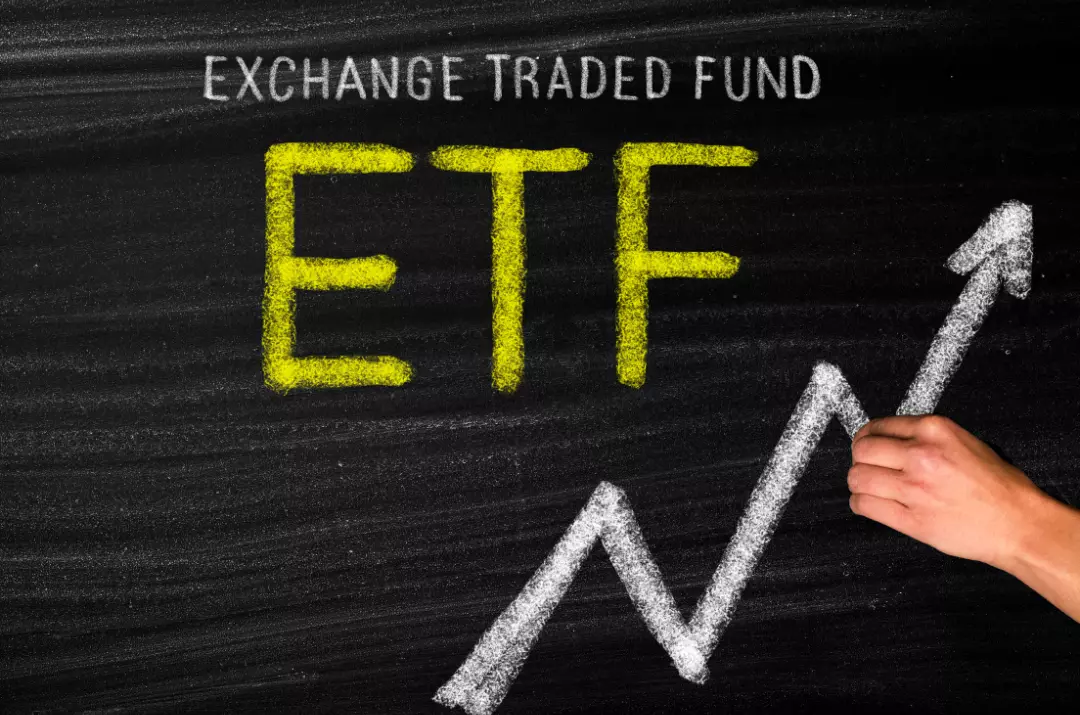How to start your own investment portfolio?
Table of Contents
ToggleIn the ever-changing world of finance, investing has become an essential tool for securing your financial future. Whether you’re planning for retirement, saving for a child’s education, or simply building wealth over time, embarking on an investment journey can seem daunting, especially for beginners. However, with the right guidance and a clear understanding of the fundamentals, you can effectively navigate the world of investing and start building a portfolio that aligns with your financial goals.
At Wealth Factory, a financial advice firm based in Toowoomba, Queensland, Australia, we believe that everyone has the potential to become a successful investor. That’s why we’re committed to providing comprehensive and straightforward financial guidance that empowers individuals to take control of their finances and achieve their long-term goals.
In this blog post, we’ll take you through the essential steps of starting your own investment portfolio, from defining your financial goals to selecting suitable investments and managing your portfolio over time. Whether you’re a complete novice or have some familiarity with investing, this guide will provide you with the knowledge and tools you need to make informed decisions and build a portfolio that aligns with your unique circumstances and risk tolerance.
Define Your Financial Goals and Time Horizon
Before diving into the world of investments, it’s crucial to establish clear financial goals and understand your time horizon. Your financial goals represent what you aim to achieve through investing, while your time horizon is the timeframe within which you plan to reach those goals.
Identifying Financial Goals
Financial goals can range from short-term aspirations to long-term dreams. Here are some examples:
Short-term goals
Saving for a down payment on a house, purchasing a new car, or amassing an emergency fund.
Medium-term goals
Saving for a child’s education, paying off high-interest debt, or building a travel fund.
Long-term goals
Securing a comfortable retirement, funding a business venture, or creating a legacy for future generations.
Understanding Time Horizon
Your time horizon is a crucial factor in determining your investment strategy. It reflects how long you can afford to invest your money before you need to access it.
Short-term time horizon (less than 5 years)
Shorter time horizons typically require a more conservative investment approach, prioritising preservation of capital over maximising returns.
Medium-term time horizon (5-10 years)
With a longer time horizon, you can tolerate some risk to pursue higher potential returns.
Long-term time horizon (over 10 years)
Long-term investors have the advantage of riding out market fluctuations and can afford to invest in riskier assets that offer higher potential returns.
Defining Specific Goals
The more specific your financial goals, the better equipped you are to make informed investment decisions. For instance, instead of simply aiming for a “comfortable retirement,” define what that means to you. Do you envision early retirement, a luxurious lifestyle, or simply financial security?
By clearly defining your financial goals and understanding your time horizon, you can create a roadmap for your investment journey. This will guide your investment decisions, ensuring that your portfolio aligns with your risk tolerance and financial objectives.
Assess Your Risk Tolerance
Risk tolerance is a crucial aspect of investing, as it determines how comfortable you are with the potential for losses in exchange for the pursuit of higher returns. Understanding your risk tolerance will help you make informed investment decisions that align with your overall financial goals and emotional comfort level.
Risk Tolerance Spectrum
Investors can be categorised as risk-averse, risk-neutral, or risk-tolerant:
- Risk-averse investors prioritise capital preservation and minimise risk. They tend to favor low-risk investments, such as bonds and certificates of deposit (CDs), even if it means potentially lower returns.
- Risk-neutral investors are comfortable with some level of risk and seek a balance between stability and potential returns. They may allocate their portfolios to a mix of shares and bonds, depending on their time horizon and financial goals.
- Risk-tolerant investors are willing to accept more risk in pursuit of higher potential returns. They may invest heavily in shares, particularly growth shares, to capitalise on long-term market growth.
Factors Influencing Risk Tolerance
Several factors can influence your risk tolerance, including:
- Age: Younger investors typically have a longer time horizon and can tolerate more risk, while older investors may prioritise stability and prefer a more conservative approach.
- Financial situation: Individuals with a secure financial situation may be more comfortable with risk, while those with limited resources may prioritise capital preservation.
- Investment experience: More experienced investors may have a higher risk tolerance due to their understanding of market cycles and investment strategies.
- Emotional comfort: Your emotional response to potential losses plays a significant role in risk tolerance. If you experience significant anxiety or stress at the thought of losing money, you may have a lower risk tolerance.
Self-Assessment Checklist
To gain a better understanding of your risk tolerance, consider the following questions:
- How would you react to a sudden market downturn? Would it cause you significant anxiety or fear?
- How important is it for you to protect your principal investments? Are you willing to accept some risk for the potential of higher returns?
- What is your overall financial situation? Can you withstand potential losses without jeopardizing your financial security?
- How much time do you have before you need to access your investment funds? A longer time horizon allows for greater risk tolerance.
By honestly answering these questions, you can get a clearer picture of your risk tolerance and make informed investment decisions that align with your comfort level. Remember, your risk tolerance is not static and can change over time as your circumstances and financial goals evolve.
Select Suitable Investment Vehicles
With a clear understanding of your financial goals, risk tolerance, and chosen investment account, you can now explore the vast array of investment vehicles available. Each asset class offers unique characteristics, risk profiles, and potential returns, making it crucial to select investments that align with your overall portfolio strategy.
Understanding Asset Classes
Asset classes are broad categories of investments that share similar characteristics. The primary asset classes include:
Shares
Shares represent ownership shares in a company, granting holders voting rights and potential for capital appreciation and dividend payments.
Bonds
Bonds are loans issued by companies or governments, offering fixed interest payments and a return of principal upon maturity.
Mutual Funds
Mutual funds are professionally managed baskets of securities that pool money from multiple investors, providing diversification and professional management.
Exchange-Traded Funds (ETFs)
ETFs are similar to mutual funds but trade on exchanges like stocks, offering transparency and intraday trading.
Cash and Cash Equivalents
These include savings accounts, money market funds, and certificates of deposit (CDs), offering low risk and low returns, but providing liquidity and stability.
Considerations for Selecting Investments
When selecting individual investments within each asset class, consider the following factors:
Risk profile
Evaluate the risk associated with each investment and ensure it aligns with your overall risk tolerance.
Return potential
Assess the potential returns offered by each investment and align it with your financial goals and time horizon.
Diversification
Spread your investments across different asset classes, sectors, and individual securities to reduce portfolio risk.
Investment fees
Compare the fees and expenses associated with different investments to minimise the overall cost of investing.
Company or issuer fundamentals
For shares and bonds, evaluate the financial health, industry outlook, and management team of the company or issuer.
Create Your Asset Allocation and Diversify
Once you’ve selected suitable investment vehicles, it’s time to determine the appropriate allocation of your assets across different asset classes. This process, known as asset allocation, is crucial for managing portfolio risk and achieving your long-term investment goals.
Asset Allocation Strategy
Asset allocation involves dividing your investment portfolio among different asset classes, such as shares, bonds, and cash equivalents. The ideal asset allocation depends on various factors, including your age, risk tolerance, time horizon, and financial goals.
General Asset Allocation Guidelines
As a general guideline, consider the following asset allocation recommendations based on age:
- Young Investors (20s-30s): 70% shares, 20% bonds, 10% cash equivalents
- Intermediate Investors (40s-50s): 60% shares, 30% bonds, 10% cash equivalents
- Conservative Investors (60s and beyond): 50% shares, 40% bonds, 10% cash equivalents
Diversification within Asset Classes
Diversification is a crucial aspect of asset allocation. It involves spreading your investments across different sectors, industries, and individual securities within each asset class. This strategy helps reduce the impact of losses in one particular investment or sector on your overall portfolio.
Benefits of Diversification
Reduced risk
Diversification lowers the impact of market fluctuations and individual security performance on your overall portfolio.
Enhanced stability
A diversified portfolio tends to exhibit more stability over time, reducing emotional stress and allowing for long-term investment goals.
Improved potential returns
Diversification can potentially enhance overall returns by exposing your portfolio to a broader range of investment opportunities.
Rebalancing Your Portfolio
Over time, as market conditions change and your financial goals evolve, your portfolio’s asset allocation may deviate from your target allocation. Rebalancing is the process of adjusting your portfolio’s asset allocation to bring it back into alignment with your target percentages.
Frequency of Rebalancing
The frequency of rebalancing depends on your individual circumstances and risk tolerance. A general guideline is to rebalance annually or when your asset allocation deviates significantly from your target allocation.
Rebalancing Strategies
There are two primary rebalancing strategies:
Market-based rebalancing
Rebalance when market conditions cause your asset allocation to deviate from your target.
Time-based rebalancing
Rebalance at predetermined intervals, regardless of market conditions.
Monitor and Rebalance Your Portfolio
Building a diversified investment portfolio is a crucial step towards achieving your financial goals, but it’s not a one-time endeavour. As market conditions change, your personal circumstances evolve, and your financial goals may shift, requiring ongoing monitoring and rebalancing to ensure your portfolio remains aligned with your objectives.
Importance of Portfolio Monitoring
Regular portfolio monitoring is essential for several reasons:
Track performance
Evaluate the performance of your investments and compare it to your benchmarks or expectations.
Identify potential issues
Detect any deviations from your target asset allocation or signs of underperforming investments.
Assess risk
Gauge the overall risk level of your portfolio and ensure it aligns with your risk tolerance.
Monitoring Strategies
There are several ways to monitor your portfolio effectively:
Review statements
Regularly review your investment statements to track performance and identify changes in asset allocation.
Use online tools
Utilise investment portfolio tracking tools or apps to access real-time data and performance analytics.
Consult with advisors
Seek guidance from financial advisors for in-depth analysis and personalised recommendations.
Frequency of Monitoring
The frequency of portfolio monitoring depends on your individual circumstances and risk tolerance. A general guideline is to review your portfolio at least quarterly or annually.
Rebalancing Triggers
Rebalancing may be triggered by various factors, including:
Significant market movements
When market fluctuations cause your asset allocation to deviate substantially from your target.
Changes in financial goals
As your financial goals evolve, your asset allocation may need to be adjusted accordingly.
Alterations in risk tolerance
If your risk tolerance changes, rebalancing may be necessary to align your portfolio with your new risk profile.
Rebalancing Process
The rebalancing process typically involves:
Identify deviations
Determine which asset classes have deviated from their target percentages.
Sell overweighted assets
Sell investments from asset classes that exceed their target allocation.
Purchase underweighted assets
Invest the proceeds from asset sales into asset classes that fall below their target allocation.
Remember, investing is a long-term endeavour, and it’s crucial to adopt a disciplined and patient approach. Stay informed about market conditions, but avoid impulsive decisions driven by short-term market fluctuations. Instead, focus on your long-term financial goals and maintain a diversified portfolio that aligns with your risk tolerance.









